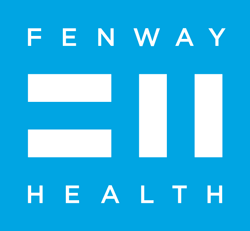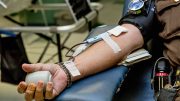 Analysis examines biomedical prevention technology to be reviewed by U.S. Food and Drug Administration by June 15, 2012
Analysis examines biomedical prevention technology to be reviewed by U.S. Food and Drug Administration by June 15, 2012
BOSTON, Mass. — Pre-exposure chemoprophylaxis (PrEP)—taking antiretroviral medications to prevent HIV transmission—could be a “game changer” for HIV prevention, according to an analysis released by The Fenway Institute last week.
PrEP has demonstrated partial efficacy with men who have sex with men (MSM) and heterosexuals in several recent studies. Recent modeling of PrEP implementation coupled with scaled up treatment predicts that PrEP could significantly reduce HIV incidence and prevalence. If PrEP is accompanied by sustained care, behavioral interventions, and safety monitoring, PrEP need not lead to increased sexual risk behavior or drug resistance.
“PrEP has the potential to dramatically reduce HIV incidence among gay men, heterosexual women and men, and other populations,” said Sean Cahill, Director of Health Policy Research at The Fenway Institute and author of the report. “We look forward to action by the U.S. Food and Drug Administration and the World Health Organization this year to make PrEP available to those most vulnerable to HIV. PrEP could prove an invaluable new tool in the fight against HIV.”
What is PrEP?
The Fenway review of PrEP implementation issues, titled Pre-exposure prophyalxis for HIV prevention: Moving toward implementation (http://bit.ly/x9XLsZ), summarizes the state of PrEP and microbicides research as of January 2012, looks at willingness to use PrEP among various populations, addresses concerns about PrEP that could present obstacles to implementation, offers strategies for effective implementation, and examines policy issues related to cost and how to make PrEP accessible to those most vulnerable to HIV. Based on a review of published research and interviews with policy makers, funders and other stakeholders, it examines regulatory developments and planning underway both within the U.S. and globally.
Side Effects, Risks
Some have raised concerns about PrEP related to potential side effects, risk compensation (the idea that people will stop using condoms if PrEP becomes available), and drug resistance. However, reviews of five major clinical trials involving about 6,000 participants by the Forum for Collaborative HIV Research shows no greater risk of side effects, no risk compensation, and no clinically significant development of drug resistance in participants.
Guidance from the U.S. Public Health Service and the World Health Organization is expected in 2012. The U.S. Food and Drug Administration announced February 13, 2012 that it would review Gilead Science’s application to use FTC-TDF (brand name Truvada) for PrEP by June 15, 2012. Demonstration projects to develop real world best practices for implementing PrEP are underway or set to launch soon in the U.S. and in sub-Saharan Africa. While the cost of PrEP in the U.S. would be substantial, private insurers and state Medicaid departments are open to covering PrEP, and low-cost generic medications could enable access in low-income countries. The prioritization of highly vulnerable populations could increase the cost-effectiveness of PrEP. Providing PrEP is also much less expensive than treating someone for HIV over the course of a lifetime.
“Fenway was a U.S. site for the global iPrEx PrEP study with gay and bisexual men, and is testing a vaginal microbicides ring with dapivirine and maraviroc,” said Kenneth Mayer, MD, Medical Research Director and Co-Chair of The Fenway Institute. “We are very optimistic about the potential for PrEP and microbicides to revolutionize HIV prevention and allow us to dramatically reduce new infections here and around the world.”
Best Interventions
The Fenway Institute’s analysis found that the most effective prevention interventions will be those that combine behavioral interventions, structural interventions, and emerging biomedical technologies, such as PrEP and microbicides. The analysis concludes with recommendations for implementation of PrEP, including the following:
- If the U.S. Food and Drug Administration (FDA), which is considering approving FTC-TDF for use as PrEP, feels that research on PrEP’s efficacy among heterosexuals is inconclusive, it should consider approving PrEP for MSM now separately, and consider heterosexuals, IDUs and other populations in the near future as the science advances.
- The World Health Organization (WHO) should issue guidance on PrEP that takes into account the promising results of the iPrEx study, Partners PrEP, and the Botswana CDC study.
- Following the release of the Bangkok injection drug user (IDU) trial results, if appropriate the U.S. Centers for Disease Control and Prevention, the U.S. Public Health Service, and the WHO should issue guidance for PrEP with IDUs.
- States should provide access to PrEP as a critical prevention service and prescription medication under the Essential Health Benefits provision of the Affordable Care Act. For highly vulnerable populations such as MSM and people in serodiscordant relationships, PrEP represents a cost-saving measure that will improve public health and save money in the medium and long term.
- Subsequent to FDA approval of PrEP, State Medicaid programs should also cover PrEP as a cost-saving measure that will improve public health and ultimately save money in health care costs.
- Global funders of HIV prevention and care should make resources available for PrEP and treatment as prevention. The WHO, PEPFAR, UNAIDS, and the Global Fund to Fight AIDS, Tuberculosis and Malaria should provide the latest research to country planners to help policy makers strike the right balance between funding for PrEP, other prevention services, and treatment.
- PrEP and microbicides research should continue with priority populations, and examine intermittent PrEP, injectables, implants and other delivery modalities that could increase adherence.
- Provision of PrEP to MSM and transgender women should occur in a broader context of ensuring clinically competent health care to gay, lesbian, bisexual and transgender people.
- Public health entities should educate most vulnerable populations about the difference between PrEP and post-exposure prophylaxis (PEP), and use the emergence of PrEP to educate people about PEP. People seeking PEP and/or HIV testing after a possible risk exposure should be prioritized for PrEP coupled with sustained behavioral interventions.
A PDF of the briefs is available online at http://bit.ly/x9XLsZ.
Fenway Health, Fenway Institute & Sydney Borum Jr. Health Center
For more than forty years, Fenway Health (www.fenwayhealth.org) has been working to make life healthier for the people in our neighborhood, the LGBT community, people living with HIV/AIDS and the broader population. The Fenway Institute (www.fenwayinstitute.org) at Fenway Health is an interdisciplinary center for research, training, education and policy development focusing on national and international health issues. Fenway’s Sidney Borum Jr. Health Center (http://sidneyborum.org/) cares for youth and young adults ages 12 to 29 who may not feel comfortable going anywhere else, including those who are LGBT or just figuring things out; homeless or living on the streets; struggling with substance use or abuse; sex workers; or living with HIV/AIDS.







